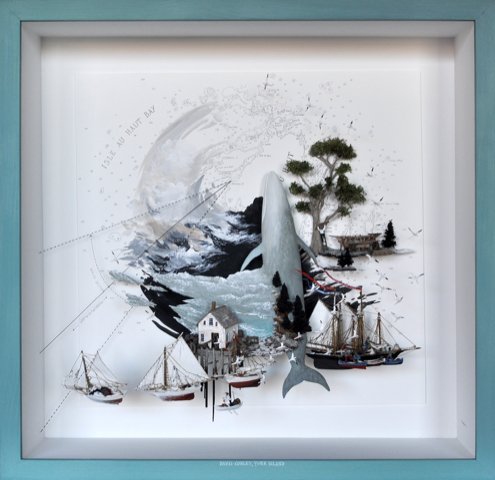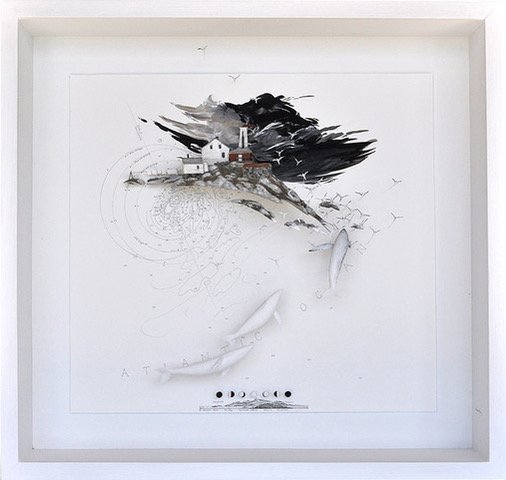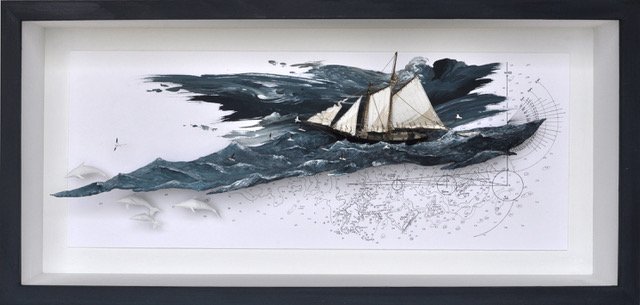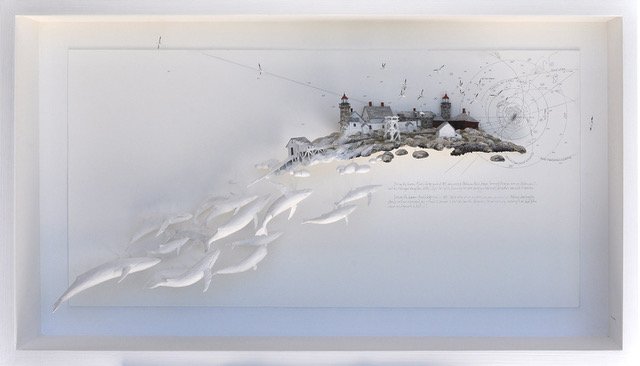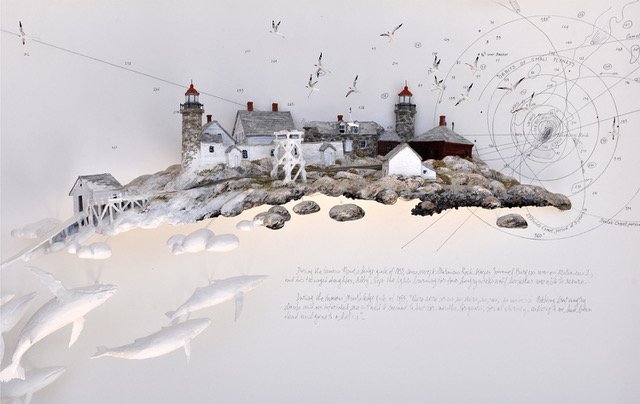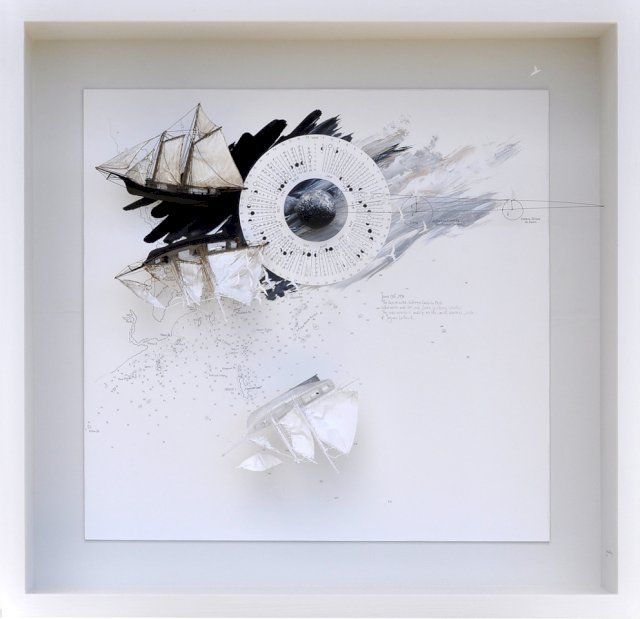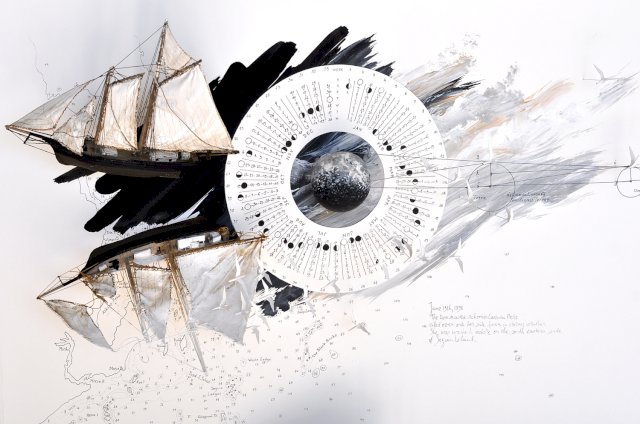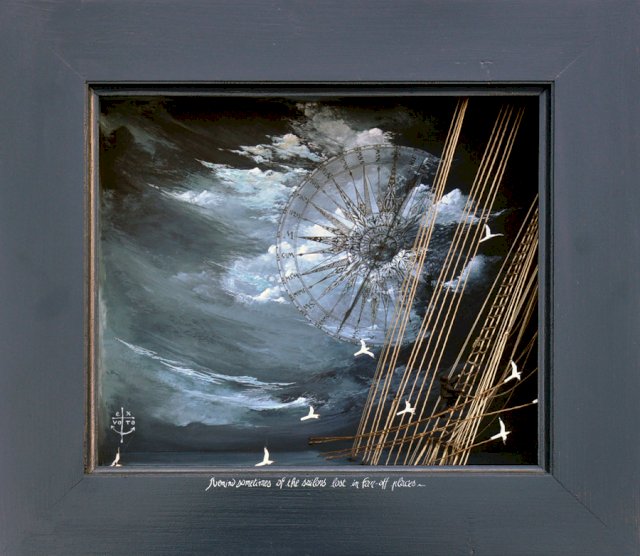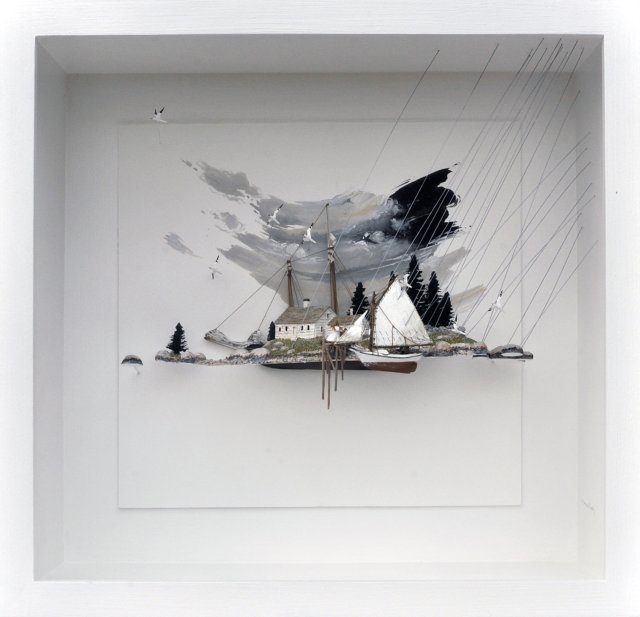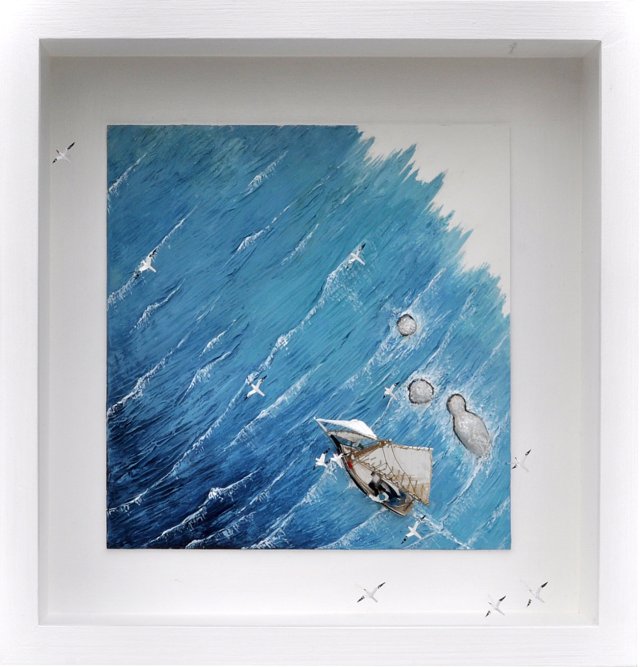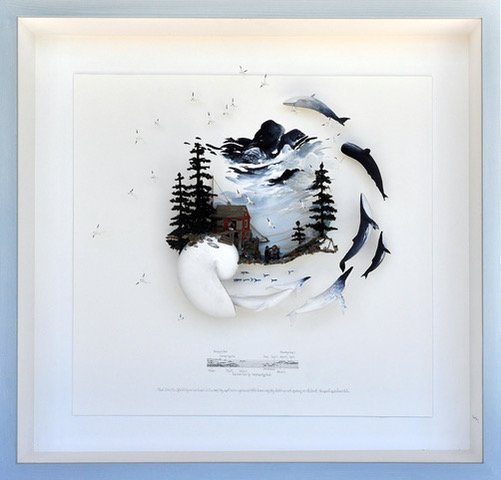Anne Emmanuelle Marpeau
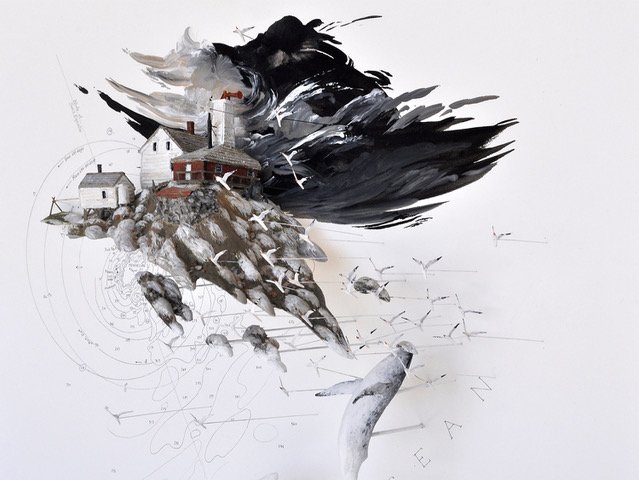
$11,000
Anne Emmanuelle Marpeau
Manana Fog Signal Station, detail
ex-voto, detail of Manana Fog Signal Station
Bio
Anne Emmanuelle Marpeau, a French artist, creates shadow box dioramas of Maine's coastal history. Marpeau continues the artistic tradition nineteenth century sailors, describing her boxes as "ex-votos", a reference to folk art as a spiritual offering for safe passage across the ocean. Her scenes describe the heritage and history of eastern seaboard towns and seafarers. A. Emmanuelle Marpeau has received several awards from the Mystic Seaport Museum including an Award of Excellence, and in September 2019, the Thomas M. Hoyne III Award, given to the work that best documents an aspect of the marine fisheries industry of today or yesterday.
Davis Conley, York Island
More fisherman than farmer, Davis Conley was an excellent sailor, hauling his traps for many years from his beloved Friendship sloop. He was the last year resident on York Island until modern times, and his life was beautiful.
In the last years of the nineteenth century, Deer Islanders used to fish the waters east of York Island, and used the harbor there as their base. During any weeknight of the summer season, as many as two dozen fishing vessels might be found there. Even smacks from Rockland usually spent the week at York buying fish or lobster as they were brought in.
Davis was drowned in the 1930s while fishing from a peapod somewhere out beyond the Turnip Patch, fishing grounds south of York Island. No one knew where, but his peapod was recovered near Matinicus.
Lavinia Belle, June 19th, 1898
On a stormy night the 1842 two masted schooner Lavinia Belle rolled over onto her side beam. The schooner washed ashore on the southeastern side of Seguin Island. All hands were saved.
